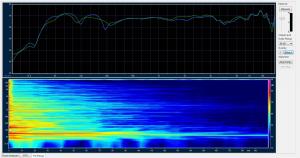-
Posts
5,469 -
Joined
-
Last visited
-
Days Won
33
Content Type
Profiles
Forums
Events
Everything posted by Craig Sawyers
-
Future electronics.
-
Hear hear. Hic. Splat.
-
I'll go with the opponent at the top, if it is OK with you
-
Must make the lignum vitae ones seem easy by comparison! Craig
-
Or even: http://www.youtube.com/watch_popup?v=EVwlMVYqMu4&vq=medium#t=10
-
Have a great one! Tyll - like the pic
-
Heh. Tongue firmly in cheek
-
After two pretty hard winters here in the UK (we're talking maybe a week of deep snow, and maybe -10C) this one is crazy mild. It is 11C at the moment. Not one single flake of snow this winter. That will remain the case unless the saline pump just off the arctic doesn't fail. Drives warm water from South America and the Carribbean to wash our Western shore, and stops us getting too cold. If/when it fails, we'll be the same temperature as places on the same latitude like Calgary and Irkutsk, and we'll freeze our nuts off - our homes aren't built to cope with those conditions.
-
Good luck! You've been through the wringer a bit on your T2, although most of us have. Mine (touch wood - as I do every time I change volume) hasn't missed a beat after multi silicon death through the dreaded counterfeit 2SC3675's.
-
Wrong forum for this - but this is the measured response of each of my '57's measured in my listening room at 1m on axis.
-
Have a great one John!!
-
Have a great one!
-
You heard the latest food scare? There has been a cohort study by a group in Scandanavia which shows that if you eat two rashers of bacon or a sausage each day, your risk of pancreas cancer increases (wait for it) by 19%. Sheesh - it had been a factor of three or something, it might have been worth thinking about - but 19% Link: http://www.guardian.co.uk/society/2012/jan/13/bacon-linked-pancreatic-cancer-report
-
Woah - I've been off this thread for too long. I'd no idea you'd been under the knife - so the very best with your recovery. PT's are a real PITA though aren't they? They show absolutely no mercy - but boy do they get results. I had my right knee worked on six years ago - and yesterday I ran 15 off-road trail miles. Hang on in there.
-
Check. His real saving grace was his outstanding two Brahms piano/cello sonatas with du Pre - but that was as much to do with their personal physical passion translating into the musical performance. But Barenboim's other recordings just don't cut the mustard. Like Julian Loyd Weber's soulless cello. But different pianists excel with particular composers - Brendel's Beethoven interpretations for example, or Periah's hatered of Liszt (he has never recorded a single Liszt piece) and superb Schubert and Chopin. Reks - I'll definitely try the Gardiner set - cheers
-
Agreed. Beehoven was about the first to put metronome marks in his music to indicate the pace. That is why Klemperer sounds too slow, and Karajan sounds like he is nitro fuelled. But I'll hazard a bet that Beethoven did not rigorously follow the MM's himself in concert. And the piano sonatas and string quartets would sound deathly dull if they were taken at a regular pace.
-
Well, I wouldn't say Kempe in preference to other Beethoven interpretations. Karl Bohm, Otto Klemperer, Rudolf Kempe and Herbert von Karajan are all equally valid interpretations. Even Karajan's different recordings of the Beethoven symponies are distinctly different. It is a bit like chosing the "best" interpreter of Wagner's Ring Cycle. The fun is in listening to all the masters and comparing and contrasting. Like Schwartzkopf's two recording of Richard Strauss's Four Last Songs, which are also quite different. About the only exception for me is the superb cello of Jacqueline du Pre. In particular the Brahms concertos for piano and cello with Bareboim on piano. The two had the hottest love affair, even when married, to the extent they had to be taken to task on long haul flights for getting too dirty. All that passion comes across in the Brahms. After listening to that even old masters like Rostropovich sound just too clinical. The next best du Pre is the Elgar cello concerto with Barbirolli. Barbirolli was a cellist himself, and performed the Elgar at its premier under Elgar's baton. So the du Pre/Barbirolli is the closest you can get to the intention of Elgar. And finally the stunnng Trout, with Du pre, Barenboim, Itzak Perlmann, and Zubin Mehta (on double bass) - actually a video recording in 1970. Looking at the price of Kempe's Beethoven symphonies it isn't so very bad, considering the actual number of discs and hours of music. Incidentally, I hit paydirt last week. I cruise the local charity shops, who specialise in house clearances and estate sales. I picked up Pavarotti, Freni and Guiraov in Boheme, Pavarotti and Sutherand in La traviata, Two Gounod operas (I don't know Gounod's stuff at all), and a four disc set of 1940's recitals by Jussi Bjorling. All absolutely pristine - for £10 (say $16).
-
Stately. There are opinions both ways about Kempe's interpretation. Those who are used to Karajan's rocket-fuelled pace will find it slow. But his interpretation of the 9th is masterly, in my view. Not as slow as Klemperer, and not a constant pace - Kempe varies the pace quite significantly depending on context, which is why it works for me. IMHO Craig
-
Happy birthday!
-
Massively off-topic, so apologies to all. But oddly enough my cousin Douglas Newton spent his life in the SAS (actually in special forces Royal Marine Commando - the UK equivalent of a Navy SEAL). Now in his early 60's with support boots (knackered ankles through sprinting everywhere in full combat gear) and two hearing aids ("from spending too long next to things that went bang"). Quite a character.
-
You wanna check my LinkedIn profile, before you go any further?
-
Y'know - you're a real piece of work. And when one of the moderators kicks your sad ass off this list, I for one will not shed one single tear.
-

Need some help/opinions with stuff I found, mostly scotch
Craig Sawyers replied to skullguise's topic in Food and Drink
I'm not too sure when it comes to blended, but these all look interesting. I've drunk a number of different Ballantines single malts, and very fine they are too. The others I haven't heard of, and may be distilleries that are now defunct (many, many distilleries have died off over the years, some are mothballed and then start up again) But all that looks really old (not that whisky ages while in the bottle), some of it maybe 60-odd years old, and very interesting indeed. Tell us what they taste like! Craig -
I just can't stop laughing at that. Thanks for taking a load off, Justin


